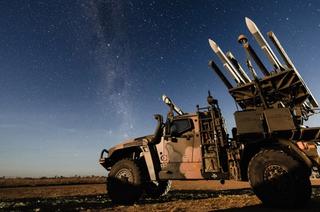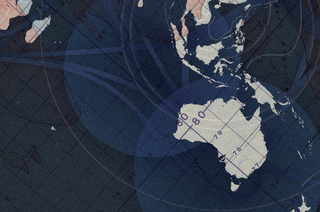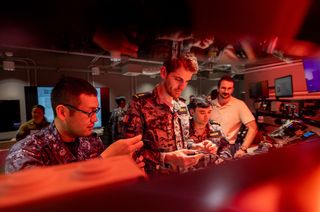Despite being one of the world’s busiest areas for shipping and seeing increased military activity from the People’s Liberation Army Navy over the past 10 years, the Indian Ocean region has insufficient maritime domain awareness according to a new brief from the United States Studies Centre (USSC) at the University of Sydney.
In Converging currents: A case for enhanced Australia-India-US maritime intelligence sharing and security cooperation in the Indian Ocean, Royal Australian Navy Commander Phil Johnson looks at the scale of threats in the Indian Ocean region and the role Australia, India and the United States can play in increasing maritime domain awareness.
“The challenges in the Indian Ocean region are not limited to military threats – protecting shipping lanes and assessing natural disasters all require an increase in the amount of sensing and intelligence sharing between countries than what we have at the moment,” USSC Director of Foreign Policy and Defence Prof. Peter Dean noted.
The brief maps out some of the key building blocks for enhancing maritime domain awareness, including existing Information Fusion Centres where international maritime intelligence is consolidated and shared, and regional activities involving the P-8 maritime aircrafts, which each country has, but they are used in complementary ways. It also points to the opportunities to enhance trilateral engagement to advance the knowledge of countries around the region.
“Australia, India and the United States all have a vested interest and something to offer to the Indian Ocean region. However, their strength lies in how they can work together on information sharing, joint exercises and aligning systems and equipment to advance their understanding of the region,” Prof. Dean concluded.
Key recommendations
Australia
- Promote expanded trilateral P-8 deployments and exercises that incorporate surveillance, information sharing, and broader intelligence, surveillance and reconnaissance (ISR) operations addressing grey-zone threats.
- Invest in regional Information Fusion Centres (IFCs) to enable more timely and structured delivery of actionable intelligence across the Indian Ocean region, helping position Australia as a vital regional
India
- Support expanded trilateral training by hosting regular trilateral exercises, involving P-8 platforms, focused on anti-submarine warfare and enhancing real-time coordination of maritime domain awareness.
- Operationalise and integrate INS Jatayu (Minicoy), INS Baaz (Andamans) and the Agaléga Island base into trilateral P-8 operations to ensure persistent coverage of strategic chokepoints and important sea lines of communication.
United States
- Institutionalise trilateral interoperability initiatives, moving ongoing P-8 cooperation from their current ad hoc format to more routinised and structured coordination.
- Facilitate incremental intelligence transparency by encouraging the improved sharing of non-sensitive ISR data, helping pave the way for more enhanced defence intelligence sharing.
Media enquiries
+61 468 480 165
ussc.media@sydney.edu.au




